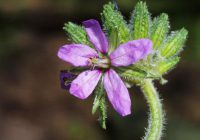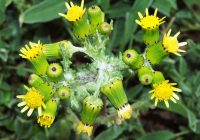Dr Phil Smith’s Wildlife Notes
April 2014
Met Office maps show that Formby was one of the driest parts of Britain during the previous “wettest ever” winter; no surprise to those who live here. The regular spring drought showed up this month with significant rainfall on only eight days. It was also one of the three warmest Aprils in the last 100 years. This had expected consequences for our wildlife habitats with a rapid fall in the sand-dune water-table affecting Natterjack Toad breeding sites. Nevertheless, there was some activity, especially at scrapes recently dug for these choosy creatures. Thus, evening visits to scrapes in the Ainsdale Sandhills produced up to 28 adult toads, including six pairs. Male Natterjacks are renowned as the loudest amphibians in Europe, their deafening chorus being heard to full advantage on 28th when a keen wildlife enthusiast from Birmingham joined us for his first Natterjack experience. He was not disappointed. Observations here and elsewhere suggest that, as climate change kicks in, the Natterjack is becoming increasingly reliant on artificial scrapes for successful breeding.
An April highlight was Mary Dean’s discovery of Musk Stork’s-bill in Duke Street Park, Formby. Mainly found in coastal regions of south-west England, Wales and Ireland, this pink-flowered plant was once cultivated as a pot and medicinal herb but has only been recorded in Sefton on three previous occasions, the last being 60 years ago in 1954. We counted 23 individuals on a disturbed path-side under trees. How it got there is a complete mystery.
Another botanical find was a particularly large colony of the rare coastal sub-species denticulatus of the familiar garden weed, Groundsel, on the southern part of Birkdale Green Beach. Travelling from Bradford to see this population, Mike Wilcox noticed what may be an undescribed hybrid between this form and the normal Groundsel sub-species, vulgaris. I also showed Mike some spectacular clumps of Purple Ramping-fumitory, a particularly attractive Red Data Book species, on Wicks Path, Formby, while growing nearby was the regionally rare Tall Ramping-fumitory. Mike invariably finds a new plant for the coast when he visits. This time it was the non-native Bearberry Cotoneaster (Cotoneaster dammeri) which I had thought was a close relative, the Swedish Cotoneaster (C. × suecicus).
The mild weather meant that insects were active throughout the month. It was particularly encouraging to see plenty of Peacock and Small Tortoishell butterflies that had successfully emerged from hibernation. I walked down to Devil’s Hole on 18th to look for Northern Dune Tiger Beetles. Finding a family playing ball near one of the major haunts, I showed them several of these charismatic predators, the two children watching them with evident fascination through my binoculars. Another rare insect, the Vernal Mining Bee, featured on my guided walk through the Birkdale Sandhills Local Nature Reserve on 13th. We found lots of colonies of this solitary bee burrowing into the cliffed edges of sandy footpaths, though only on the south-facing side. Later, I took (bad) photos of a day-flying Orange Underwing moth on Freshfield Dune Heath, a new record for the reserve of this “local” species.
Following up a report from John Dempsey, Trevor Davenport joined me on a visit to the Lancashire Wildlife Trust’s Haskayne Cutting Nature Reserve on 23rd to photograph one of our most attractive spring butterflies, the Orange Tip. We soon found several perching mainly on Cuckoo-flower, the caterpillar’s food-plant. During brief sunny periods, they flew about actively, only to settle again as cloud obscured the sun. A nearby mossland field contributed 10 Wheatears, a Whinchat and a superb male Yellow Wagtail.
During a month when summer migrants are flooding in, another bird highlight was a flock of 130 White Wagtails near Hightown on 15th, the largest number I have ever seen, and a singing male Redstart at Ravenmeols woods on 27th. Nearby, I heard a snatch of song from a Wood Warbler. This used to be a regular migrant on the coast but has now become a great rarity.




